11. Building support facilities
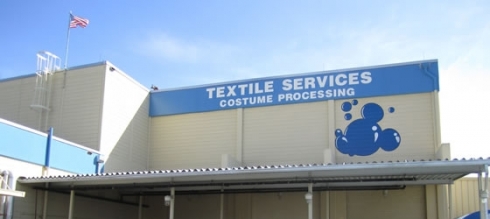
When Walt Disney World was first built, Central Florida lacked many of the facilities that would be needed to run the massive resort, so Disney simply built them itself. Many of them are located at Central Shops, north of the Magic Kingdom. This is capable of fabricating everything from trash cans to ride vehicles, and is divided into sub-areas such as the Metal Shop, Maintenance Services and the Paint Shop. Elsewhere, the world's largest laundry facilities was constructed, capable of cleaning tens of thousands of pounds of linen every single day.
12. Preparing to feed the masses
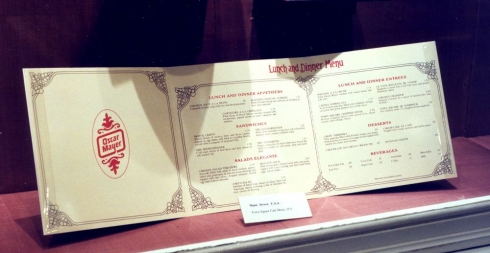
Another missing piece of essential infrastructure in Central Florida was the lack of a food distribution center large enough to handle the volume of guests that Walt Disney World would be feeding. Again, Disney built its own. Food was shipped there before being sent on to other locations around the property, and essential items such as breads, pastries, soups, sauces, meat, pizza, sandwiches and salads were prepared there.
13. Imagineering the Magic Kingdom
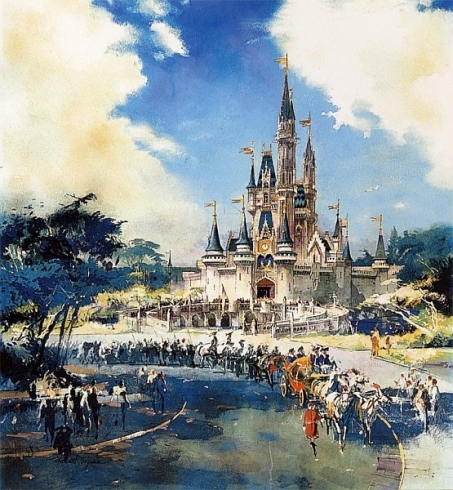
Back in California, Imagineers worked on the design of Disney's second theme park. While it would be closely based on the original Disneyland, it would be on a much larger scale. You can see more concept artwork for the park in this article.
14. Devising storylines
Everyattraction at the Magic Kingdom was given its own storyline, usually backed up by extensive historical reseach. These were built up into storyboards, which enabled the Imagineers to see how each attraction would run from start to finish. Hundreds of sketches were based on these storyboards to build up a visual image of what each ride, show or other element of the park should look like.
15. Building scale models
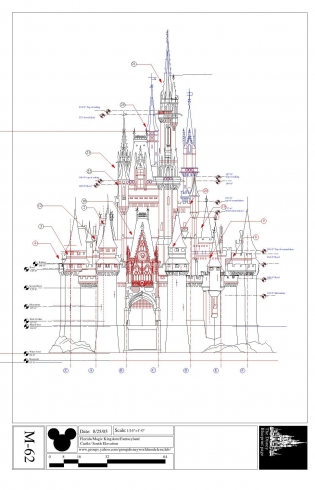
With storyboards in place, the Imagineers could then build scale models of each attraction, which would provide a much better view of what exactly guests would see when experiencing them. The Imagineers had to consider everythingthat would be visible to guests - if they turned around unexpectedly, for example. These models were then used to create full-sized sculptures of props and audio-animatronic characters, which in turn could be used to create molds for the actual final items before they were fabricated.
16. Constructing the Monorail
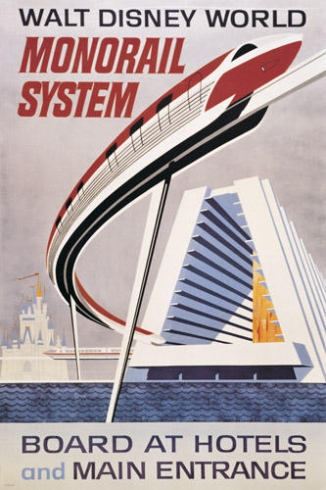
The monorail was to form the backbone of Walt Disney World's transportation system. The beams, made using concrete with a polystyrene core to ensure that they weren't too heavy, had to be shipped all the way from Tacoma, Washington. The freight bill alone came to $980,000.
17. Installing a communications system

Like many other elements of the resort, Walt Disney World's communications systems were the first of a kind. Disney partnered with the Florida Telephone Company to create Vista-United Telecommunications, which not only enabled phone calls but also allowed data and video to be sent to sites all over the resort. It was the first ever fully electronic phone system using underground cables, as well as the first to user fiber-optics in a commercial system.
18. Controlling the bug population
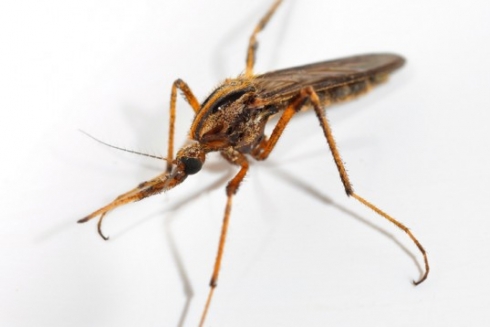 Walt Disney World was likely to be infested by mosquitoes and deerflies, unless Disney could somehow control the pests. The company experimented with numerous environmentally-friendly ways to do this, avoiding the use of restricted pesticides. Low-intensity lights were used at the Magic Kingdom to avoid attracting the bugs. Eventually, the resort implemented a system of releasing "good" insects to feed on the "bad" ones to supplement the chemicals.
Walt Disney World was likely to be infested by mosquitoes and deerflies, unless Disney could somehow control the pests. The company experimented with numerous environmentally-friendly ways to do this, avoiding the use of restricted pesticides. Low-intensity lights were used at the Magic Kingdom to avoid attracting the bugs. Eventually, the resort implemented a system of releasing "good" insects to feed on the "bad" ones to supplement the chemicals.
19. Building the resort hotels
The construction of Walt Disney World's three original resort hotels (the Contemporary Resort, Polynesian Resort and Fort Wilderness) was a hugely complex undertaking, deserving of being told in entire books rather than a single list item in this article. Each of the resorts was designed to be just as heavily-themed as the Magic Kingdom itself, and to form an extension of an area of the park. The Polynesian Resort, for example, was an extension of Adventureland. The Fort Wilderness campground, meanwhile, was reminiscent of Frontierland. The Contemporary Resort was designed to form a suitable backdrop for Tomorrowland - and it used a fittingly futuristic method of construction. In a partnership with US Steel, a modular system was used. This saw the rooms being manufactured at an assembly plant, and being fully outfitted with bathroom fixtures and other elements. They were then loaded into the steel frame of the hotel. Designed to be cheaper than conventional construction, the method actually proved to be too slow and too expensive, and Disney and US Steel parted ways.
20. Adding the nerve center
Located roughly underneath Cinderella Castle in the utilidors of the Magic Kingdom is the Digital Animation Control System (DACS), a computer system that monitors almost everything in the park. This includes lighting systems, stage curtains, fire protection systems, security systems and power systems. It also controls and sychronizes the movements of hundreds of audio-animatronic figures that feature in the park's attractions.
21. Preparing to suck away the trash
The most famous element of the Walt Disney World garbage disposal infrastructure is the Magic Kingdom's Automated Vacuum Assisted Collection system. Developed in Sweden, AVAC uses compressed air to propel garbage at 60 miles per hour to a central collection point behind Splash Mountain where it is processed (and much of it recycled). There are access points located all over the park, which can be used to "suck" trash into the tubes. The tubes themselves are 20 inches in diameter, with the vacuum being created by a system of motors and exhausts. Like DACS, they were installed in the utilidors, making them easily accessible if maintenance is required.
22. Recording audio tracks
Image © Disney
Audio is an essential part of any Disney attraction. While props were being acquired or fabricated and sets were being constructed, voice actors were busy in studios recording voiceovers and sound effects were also being devised. To add to the feeling of stepping into another world, special background music was put together for each individual land of the Magic Kingdom - just like the soundtrack for a movie.
23. Building the attraction buildings
One of the essential elements of the park to be constructed were the attraction buildings. Although the facades would be visible to guests, many rides are actually hosted in much larger structures that cannot be seen by guests. This is clear in the construction image of Liberty Square above.
24. Installing the attractions
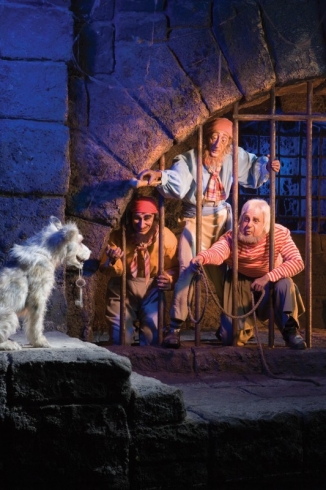
With the show buildings in place, the ride systems, show equipment and special effects could be installed inside them. This included audio-animatronic figures and other high-tech elements, all controlled by DACS to ensure that they remained in sync.
25. Providing transportation
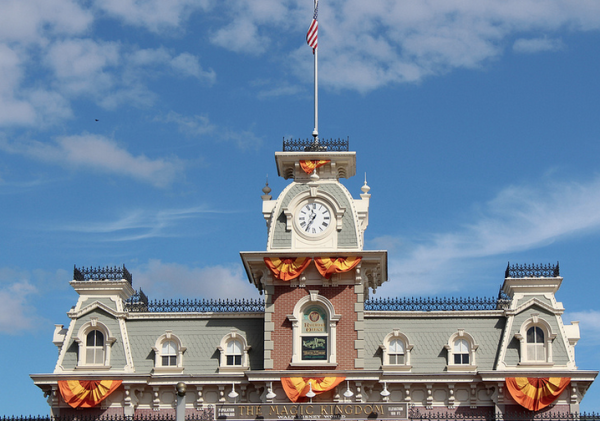
It would require a lot more than just the monorail to enable guests to move around the sprawling resort. It was supplemented by numerous other systems, including ferryboats and other water craft, some of which were refurbished at Walt Disney World's own dry dock. In the Magic Kingdom, just as they had done at Disneyland, steam locomotives would circle the park. These were found in Mexico, before being refurbished in Tampa.
26. Constructing an icon
The 189-feet-tall Cinderella Castle took some 18 months to construct. The inner structure consists of a 600-ton steel-braced frame, while a 10-inch-thick reinforced concrete wall encircles it to the height of the outermost "stone" walls. Most of the exterior of the building was built using fiber-reinforced gypsum plaster, with fiberglass being used for the walls of some of the ornate towers. The towers consists of plastic attached to a cone of steel, and were lifted into place by a crane before being bolted onto the main structure. The castle uses "forced perspective" techniques to appear larger - as it gets taller, its width gets smaller.
27. Hiring Cast Members
Staffing a huge new resort in a largely-undeveloped area was a major undertaking. Top management positions were taken by experienced Disneyland employees, to ensure that the resort would be run in the way that Disney wanted it to be. But there were still thousands of lower-ranking Cast Member positions to be filled. To help ensure that there would be sufficient numbers of staff experienced in the Disney way, the company began recruiting students from colleges in the east to work summer internships at Disneyland. It began this program in 1968, enabling it to get a number of employees lined up before the resort even opened. It wasn't hard to find applicants for the remaining spots. For each opening, there were around 20 applicants eager to work for Disney.
28. The Preview Center
One of the first places to hire Cast Members was the Preview Center, which opened in January 1970. Here, prospective visitors could watch a film about the upcoming resort, as well as looking at a huge model of it. It operated for 22 months, pre-selling some $11 million worth of tickets to the Magic Kingdom.
29. Adding the finishing touches
Despite all the meticulous planning, there were still plenty of last-minute panics as Walt Disney World prepared to open its gates. Bamboo walls in the Polynesian Resort's Lobby began to fall apart, and were replaced by fiberglass bamboo. Only three monorail trains had arrived, so parking lot trams were forced into long-distance service. Unfinished spots were simply filled up with concrete, and backstage areas were left unfinished (there were no dividing walls in the offices above Main Street USA, for example).
30. The grand opening
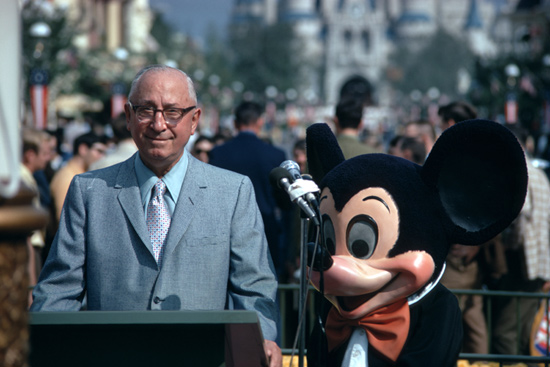
Image: Disney
The Magic Kingdom opened at Walt Disney World on October 1, 1971. On October 25, Roy Disney joined Mickey Mouse to dedicate the park. He died just two months later.
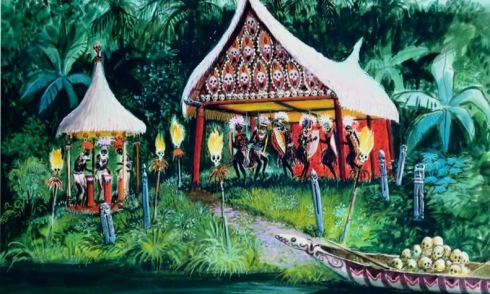
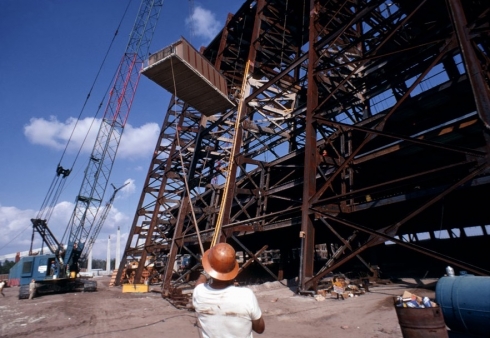
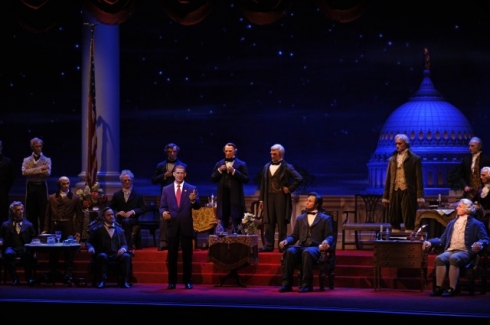
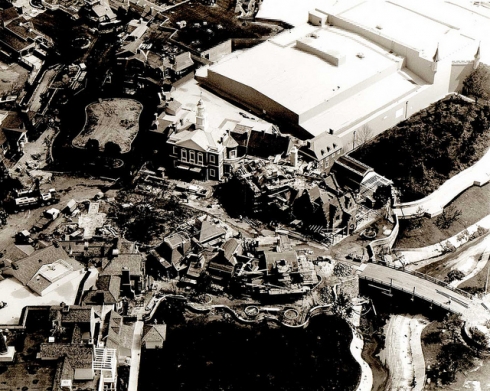
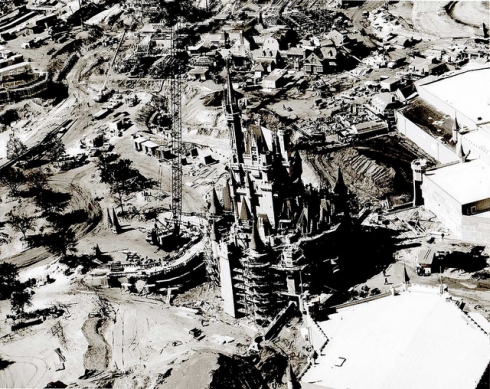
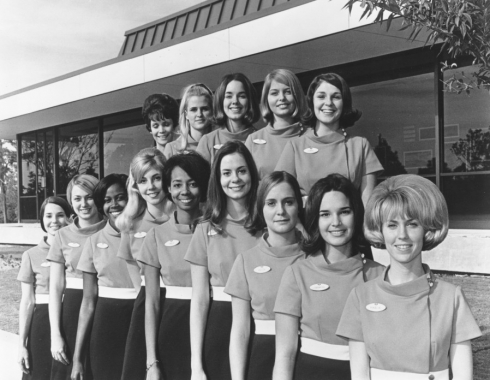
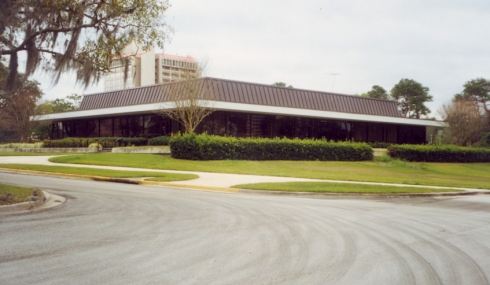

Add new comment